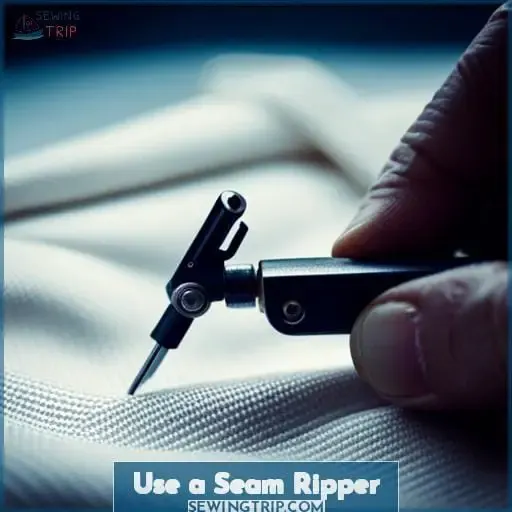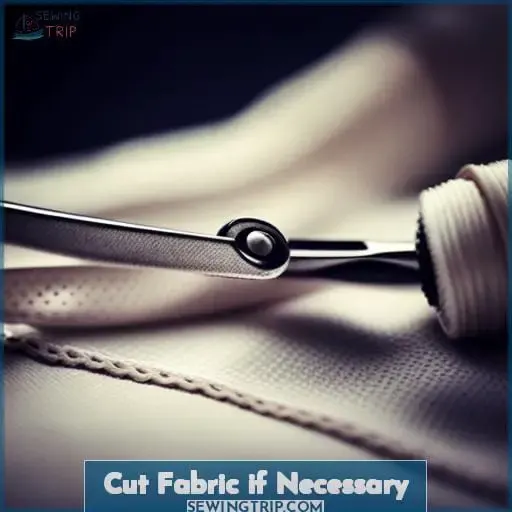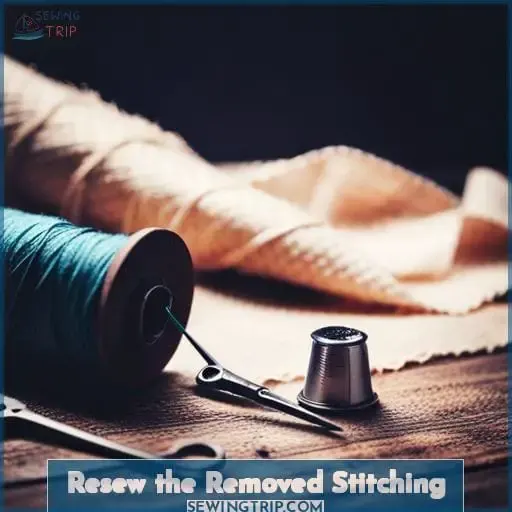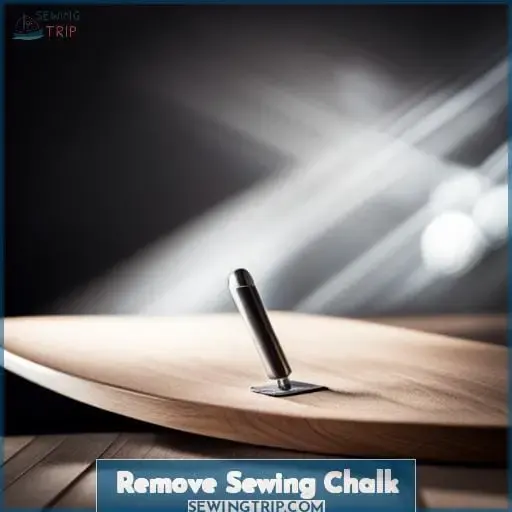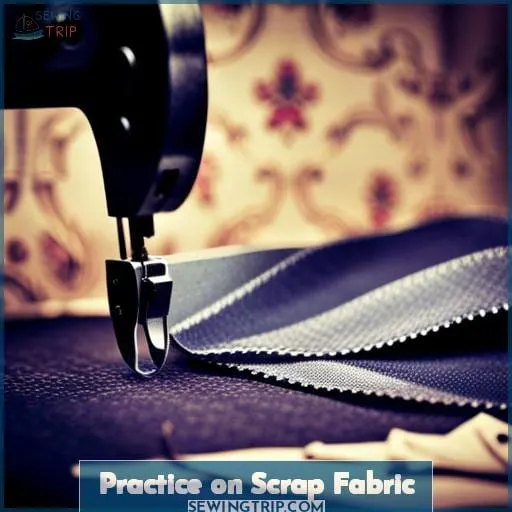This site is supported by our readers. We may earn a commission, at no cost to you, if you purchase through links.
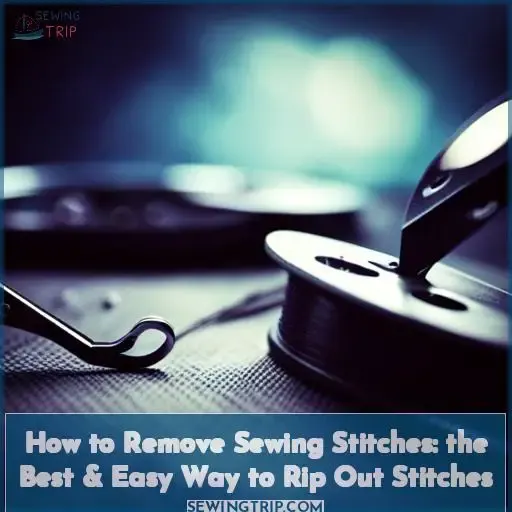 Sewing mistakes happen to the best of us. Luckily, removing sewing stitches is easy with a seam ripper.
Sewing mistakes happen to the best of us. Luckily, removing sewing stitches is easy with a seam ripper.
- Insert the seam ripper under the first stitch you want to remove.
- Gently pull the seam ripper up and out, taking the stitch with it.
- Continue removing stitches in this manner until you have reached the desired point.
- Use a needle and thread to close the hole left by the removed stitches.
Table Of Contents
Key Takeaways
- Use a seam ripper to carefully lift and pull out each stitch.
- Turn the fabric over and cut the thread if needed.
- Close the hole with a needle and thread.
- Remove any sewing chalk marks.
Use a Seam Ripper
To start removing stitches,
- Insert the sharp tip of the seam ripper between the thread and the fabric.
- Gently pull the seam ripper upward away from the fabric to cut the thread.
- Repeat at the opposite end of the stitching you want to remove.
Work on the same side of the fabric as you rip the stitches.
- Move the seam ripper a few stitches away from the cut thread, within the section of stitching you want to remove.
Turn the Fabric Over and Pull Thread
Turn the fabric over.
Pull the thread that you haven’t cut.
This will undo the stitches and allow you to remove the fabric from the seam.
Be careful not to cut the fabric or thread, and avoid cutting through the seam.
Cut Fabric if Necessary
If a cut in the fabric does happen and it isn’t in a visible area, immediately use fusible lightweight interfacing on the wrong side of the fabric with the cut closed as much as possible. Waiting to do this step can cause the edges of the cut to fray and the cut will always be visible.
The cut will weaken the fabric no matter what, but in most cases, the fusible interfacing can mend the cut if it’s inside the item you’re sewing.
Resew the Removed Stitching
After resewing the removed stitching, trim the thread tails.
To ensure a secure and professional finish, it’s important to follow proper sewing techniques when resewing.
Begin by positioning your fabric under the presser foot of your sewing machine or serger.
Lower the needle into the existing stitching a few stitches back from where you removed the stitches.
Sew backwards for a few stitches to create lock stitches that will prevent unraveling.
Then, sew straight along the seamline until you reach the end of where you’re replacing stitching.
Sew over a couple of stitches and backstitch in order to reinforce this section as well.
It’s recommended to use catch or lockstitches at both ends for added strength and durability in your garment or project.
Remove Sewing Chalk
To remove sewing chalk,
- Rub an eraser over the chalk marks until they disappear.
- If the chalk is stubborn, try using a pencil eraser or a chalk brush.
- You can also use a damp cloth or a hair dryer to remove the chalk.
Avoid using too much chalk when marking your fabric, as it will be more difficult to remove.
If you’re using a serger, you can use a pencil to mark your fabric instead of chalk. Overlock stitches won’t pick up the pencil marks, so you can easily remove them after you’re finished sewing.
Practice on Scrap Fabric
Practicing on scrap fabric is the best way to learn how to rip out stitches without tearing fabric or weakening the fabric’s strength.
Use a sharp tip seam ripper to cut every 4th stitch and then turn the fabric over and pull on the thread that you haven’t cut.
Frequently Asked Questions (FAQs)
What should I do if the thread breaks while using a seam ripper?
If the thread breaks while using a seam ripper, move over a few stitches and start again.
Quality thread can often be pulled to remove the stitching.
Be patient and avoid tearing the fabric.
How can I prevent a cut in the fabric from fraying?
To prevent a cut in the fabric from fraying, immediately apply fusible lightweight interfacing on the wrong side of the fabric with the cut closed as much as possible.
Can I use a contrasting thread color when resewing the removed stitching?
You can use a contrasting thread color when resewing the removed stitching, but typically you’d use the same color thread.
Is it necessary to trim the thread tails after resewing the stitching?
Yes, it is necessary to trim the thread tails after resewing the stitching to prevent them from becoming tangled or caught on other fabrics.
What are some safety precautions to take when removing a sewing machine from its cabinet?
To prevent damage to your sewing machine, make sure it’s unplugged before removing it from the cabinet.
Be careful not to drop the machine, as this could damage the machine or injure yourself.
Conclusion
To remove sewing stitches like a pro, use a seam ripper to carefully lift and pull out each stitch.
Remember to turn the fabric over and cut the thread if needed.
Once the stitches are removed, close the hole with a needle and thread.
Don’t forget to remove any sewing chalk marks and practice on scrap fabric to perfect your technique.
With these easy steps, you’ll be able to remove sewing stitches effortlessly and achieve professional-looking results.

